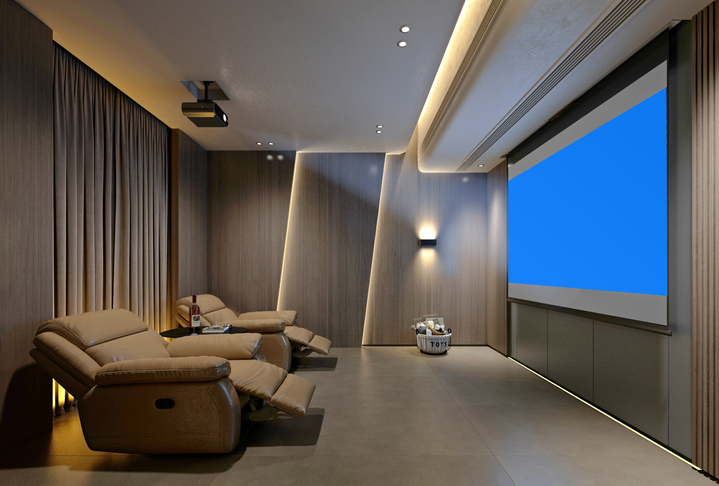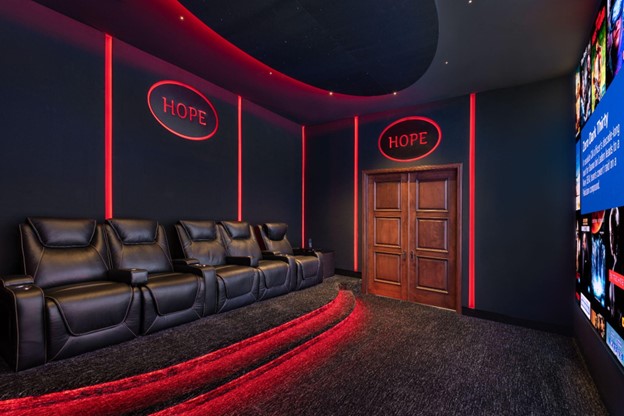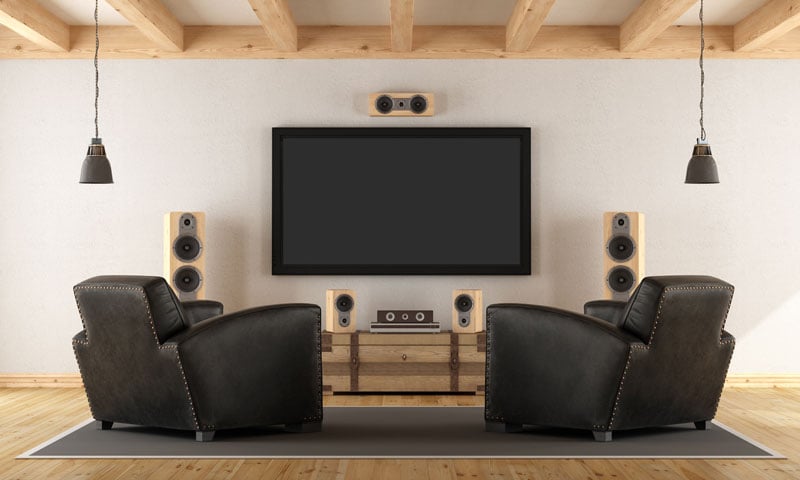How to Find the Best Home Theater Tampa Installation Services
How to Find the Best Home Theater Tampa Installation Services
Blog Article
Home Theater 101: Everything You Required to Know for a Motion Picture Experience at Home
Creating a home theater that rivals the cinematic experience of a commercial theater entails careful factor to consider of multiple parts, including screen choice, audio systems, and space format. Whether you are contemplating the optimal screen dimension or the complexities of border sound, recognizing these basics is vital.
Choosing the Right Screen
When setting up a home theater, picking the best display can make or damage the viewing experience - tampa home theater. The screen functions as the centerpiece of your arrangement, influencing picture top quality, seeing angles, and overall visual. Secret variables to take into consideration consist of display size, resolution, and kind
First, identify the proper screen dimension based on your space dimensions and seating range. Next off, select between various display types, such as fixed-frame, motorized, or retracting displays, each offering unique advantages.
Resolution is one more important factor. For a truly immersive experience, consider a display created for 4K and even 8K material, guaranteeing intensity and clarity. Additionally, take into consideration the display's gain, which impacts illumination and contrast; a greater gain can enhance brightness in well-lit rooms, while a lower gain may be extra appropriate for darker atmospheres.
Choosing Sound Equipment
Audio devices is an essential component of any home theater system, dramatically boosting the total watching experience. The option of audio gear can establish the deepness, clarity, and immersion of sound, vital for producing a cinematic environment.
When picking audio equipment, think about a border sound system, which commonly includes a receiver, several audio speakers, and a subwoofer. A 5.1 or 7.1 channel system is recommended, where the initial number stands for the audio speakers and the second the subwoofer, offering an immersive soundscape. The receiver is the heart of the system, handling sound and video clip signals, and must sustain modern styles like Dolby Atmos for an improved spatial experience.
Quality audio speakers are essential; seek designs that provide a balanced noise profile with good bass reaction. Floor-standing speakers can generate richer sound, while bookshelf choices conserve space. Additionally, consider wireless options for convenience of setup, although wired systems typically supply remarkable performance.

Optimum Seating Plans
Developing an ideal home cinema experience pivots dramatically on ideal seating plans. The plan of seats plays a critical role in both comfort and watching high quality, directly influencing the total motion picture experience.
First, take into consideration the screen size and watching range. A common guideline is to place seats at a range about 1.5 to 2.5 times the diagonal size of the screen. This makes sure an immersive experience without straining the eyes.
Next, elevation is important. The back rows should be greater than the front to avoid blockages if your seats is in a tiered style. For level seats, make sure that the front row is not as well close to the screen, which everybody has a clear view.
Additionally, consider the arrangement in regards to social dynamics. Group seats can improve the public experience, while private seats might be preferred for personal viewing.

Lastly, focus on convenience with ergonomic seating that sustains extended watching periods. Including recliner chairs or cushioned seats can significantly improve the experience, making the home movie theater a preferred destination for both enjoyment and leisure.
Lighting and Ambiance
Effective illumination and atmosphere are important elements of a well-designed home theater, as they considerably influence the seeing experience. The best lighting can boost the motion picture feeling, while poor options can interfere with it. For ideal outcomes, consider a split illumination method that consists of ambient, task, and accent lights.
Ambient lights offers general illumination, making certain that the space is not entirely dark, which can stress the eyes. Dimmer buttons are highly recommended, enabling for changes based upon the content being watched. Job illumination, such as wall surface sconces or floor lights, supplies practical illumination for activities like analysis or browsing the room without interrupting the total atmosphere.
Accent lighting can be used to highlight architectural attributes or produce prime focus, adding depth and rate of interest to the area. LED strip lights behind screens or along racks can provide a refined radiance that enhances the visual experience without frustrating the visitor.

Wiring and Installation Tips
A tactical wiring arrangement is important for attaining ideal performance in your house cinema system. Appropriate circuitry not only guarantees high-grade sound and video clip signals yet likewise enhances the total aesthetic of your space. Begin by mapping out your format, determining where each part will certainly be placed, including your display, audio speakers, and receiver.
When choosing cables, focus on top notch, properly evaluated electrical wiring to minimize signal loss. HDMI cables need to be made use of for video links, while audio speaker cord should match the specs of your audio speakers and amplifier. Select in-wall ranked cords to abide by safety requirements and keep a clean look.

Final Thought
In summary, developing an extraordinary home theater experience requires cautious factor to consider of various components, including screen selection, audio tools, seating plans, lighting, and circuitry. By prioritizing these variables, a cinematic ambience can be effectively replicated, allowing for immersive checking out experiences that measure up to typical theater settings.
Creating a home cinema that equals the motion picture experience of a business theatre involves careful factor to consider of several parts, including display selection, audio systems, and room design.When establishing up a home theater, picking the ideal display can make or break the watching experience. Next off, choose between different screen kinds, such as fixed-frame, motorized, or retracting screens, each offering unique read this advantages. For a really immersive experience, think about a screen made for 4K or even 8K content, guaranteeing intensity and clearness.In recap, developing an exceptional home cinema experience requires cautious factor to consider of numerous components, including display selection, audio tools, Discover More seating arrangements, lighting, and circuitry.
Report this page